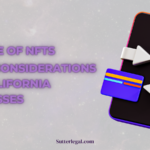Table of Contents
- Introduction:
- Understanding Indemnification Hold-Backs:
- Purpose and Benefits of Indemnification Hold-Backs:
- Structuring an Indemnification Hold-Back:
- Negotiating Indemnification Hold-Back Terms:
- Conclusion:
Introduction:
When engaging in mergers and acquisitions (M&A) transactions, the parties involved often encounter various complexities and risks. One crucial aspect of mitigating these risks is the use of indemnification hold-backs.
This blog post aims to provide a comprehensive guide to M&A indemnification hold-backs, shedding light on their purpose, structure, and benefits.
Understanding Indemnification Hold-Backs:
Indemnification hold-backs are a common mechanism used in M&A deals to manage potential post-closing risks and liabilities. They involve setting aside a portion of the purchase price in an escrow account for a specified period.
This reserve acts as security for the buyer, providing financial protection against any breaches of representations, warranties, or indemnification obligations made by the seller.
Purpose and Benefits of Indemnification Hold-Backs:
The primary purpose of an indemnification hold-back is to protect the buyer from financial losses arising from undisclosed liabilities, breaches of warranties, or misrepresentations by the seller.
By reserving a portion of the purchase price, the buyer has immediate access to funds if any issues arise post-closing, reducing the need for legal proceedings and disputes.
Some key benefits of indemnification hold-backs include:
a) Financial Protection: Hold-backs provide a source of funds to compensate the buyer for any losses incurred due to the seller’s misrepresentations or breaches of warranties.
b) Negotiation Leverage: The presence of a hold-back can give the buyer additional leverage during negotiations, encouraging the seller to be more forthcoming and transparent about potential risks.
c) Post-Closing Dispute Resolution: Hold-backs streamline the resolution of disputes by providing a predetermined mechanism for assessing damages and determining the appropriate release of funds.
d) Aligning Interests: Hold-backs align the interests of the buyer and the seller by incentivizing the seller to ensure the accuracy and completeness of representations and warranties.
Structuring an Indemnification Hold-Back:

The structure of an indemnification hold-back can vary depending on the specifics of the transaction. Key considerations when structuring a hold-back include:
a) Amount: The amount set aside as a hold-back is typically a percentage of the total purchase price, with common ranges falling between 5% to 15%. The specific amount is influenced by factors such as the nature of the business, industry norms, and perceived risks.
b) Escrow Account: The hold-back amount is deposited into an escrow account controlled by a neutral third party, such as a financial institution or an escrow agent. The funds are held in the account until the specified release conditions are met.
c) Release Conditions: The release of hold-back funds typically occurs after a predetermined period, often ranging from 12 to 24 months, during which the buyer can identify and claim any breaches or liabilities. Release conditions may also include specific milestones, representations, or warranties that must be satisfied.
d) Claims Process: A well-defined claims process is crucial to ensure a smooth resolution of disputes. This process should outline the steps involved in notifying the seller, assessing the claim’s validity, and releasing funds from the hold-back account.
Negotiating Indemnification Hold-Back Terms:
Negotiating the terms of an indemnification hold-back is an important aspect of the M&A deal-making process.
Buyers and sellers should consider factors such as the target company’s financial stability, the level of risk associated with the transaction, and the seller’s indemnification cap when determining the hold-back amount and release conditions.
Conclusion:
Indemnification hold-backs play a vital role in managing risks and liabilities in M&A transactions.
If you have questions about your hold-back or how to submit a claim against the hold-back reach out to one of the experienced M&A attorneys at Sutter Law for a free consultation.






